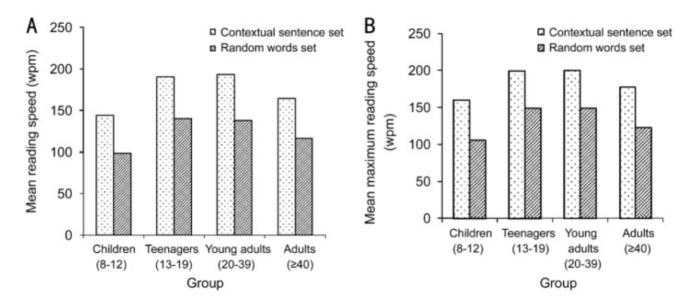
What’s Considered a Normal Reading Speed, and Does It Matter?
Reading speed is an important aspect of the reading process, as it determines how quickly and effectively we can absorb information. But what exactly is considered a normal reading speed, and does it really matter in the grand scheme of things? In this article, we’ll explore the concept of reading speed, its implications, and whether or not it truly makes a difference.
What is considered a normal reading speed?
The average adult reading speed is between 200 to 300 words per minute (wpm). However, this can vary depending on the individual’s level of education, reading habits, and overall cognitive abilities. Some people may read much faster, while others may read slower. Factors such as the complexity of the material, the reader’s familiarity with the subject matter, and the purpose of the reading can also influence reading speed.
In general, reading speeds can be categorized as follows:
– Slow readers: Less than 200 wpm
– Average readers: 200 to 300 wpm
– Above-average readers: 300 to 400 wpm
– Fast readers: 400+ wpm
It’s important to note that reading speed is not necessarily an indicator of a person’s intelligence or comprehension abilities. Some people may read slowly due to visual processing issues, language difficulties, or other cognitive factors. On the other hand, fast readers may not necessarily have better comprehension skills, as they may skim over important details or fail to fully understand the material.
Does reading speed matter?
While reading speed can influence the rate at which we consume information, it doesn’t necessarily determine the quality of our reading experience. In fact, the focus on speed can sometimes detract from the more important aspects of reading, such as comprehension, analysis, and critical thinking.
However, there are certain situations where reading speed may matter. For example, students often need to read large volumes of material in a short amount of time, such as when preparing for exams or writing research papers. In these cases, a faster reading speed can be advantageous in order to cover more material in a limited time frame.
Similarly, professionals who need to stay updated on industry trends and developments may benefit from a faster reading speed. For example, lawyers, doctors, researchers, and journalists often need to sift through large amounts of information in order to stay current in their fields.
Additionally, individuals who enjoy reading for leisure may find that a faster reading speed allows them to explore more books and topics within a given time period. This can be especially beneficial for avid readers who have a lengthy list of books they want to read.
On the other hand, there are also instances where a slower reading speed can be advantageous. For complex or technical material, taking the time to read slowly and carefully can lead to better understanding and retention of the information. Some literature and poetry also require a slower reading pace in order to fully appreciate the nuances of the writing.
Ultimately, the importance of reading speed depends on the context and the individual’s specific goals and needs. There is no one-size-fits-all approach, and different situations may call for varying reading speeds.
How to improve reading speed
For those who wish to improve their reading speed, there are several strategies that can be employed. One of the most effective methods is practice. By consistently reading and challenging yourself with progressively more difficult material, you can gradually increase your reading speed over time.
Another technique is to eliminate subvocalization, or the habit of silently pronouncing each word as you read. This can slow down the reading process, as the brain is capable of processing words and phrases much faster than we can articulate them. By training yourself to read without subvocalizing, you can significantly increase your reading speed.
Using a pointer, such as your finger or a pen, to guide your eyes along the lines of text can also help improve reading speed. This can help reduce regression, or the tendency to backtrack and re-read passages, which can be a common obstacle to faster reading.
Additionally, practicing active reading techniques, such as skimming and scanning, can help you become more adept at quickly extracting key information from a text. This can be especially useful when reading for specific purposes, such as research or studying.
Some individuals may also benefit from specialized speed reading courses or programs, which are designed to help improve reading speed through targeted exercises and strategies.
In conclusion, reading speed is a significant aspect of the reading process, but it’s not the only factor to consider. While a faster reading speed can be advantageous in certain situations, it’s important to prioritize comprehension and critical thinking over sheer speed. Ultimately, the goal of reading should be to engage with and understand the material, rather than simply racing through it. By finding a balance between reading speed and comprehension, individuals can optimize their reading experience and achieve their specific goals.


















